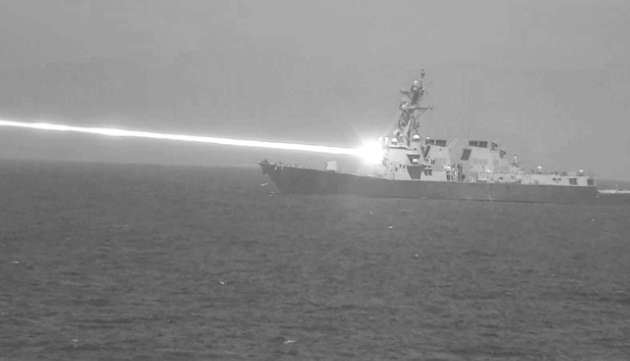US Navy Conducts Tests on Advanced Laser System for Countering Drones
The Pentagon’s Director of Operational Testing & Evaluation has shared a rare image of the US Navy’s HELIOS anti-drone laser in action. A prototype was mounted on the destroyer USS Preble in 2022 and was tested against an aerial target during the last fiscal year, according to DOT&E. The test aimed to “verify and validate the functionality, performance, and capability of HELIOS against an unmanned aerial vehicle target,” although no further details were provided.
HELIOS is a 60-kilowatt class solid-state laser, equipped with high-resolution cameras and sensors, and integrated with the Aegis fire control system used by the Navy’s surface combatants. This laser is designed to eliminate small aerial and waterborne threats at a low cost, offering a virtually unlimited supply of ammunition.

Source: DOT&E
This capability is particularly beneficial for countering low-cost threats like bomb boats and small UAVs, allowing a laser-equipped warship to defend itself while conserving expensive air defense missiles for larger threats. The Navy has emphasized the need for advancements in laser weapons, especially following intense engagements with Houthi drones in the Red Sea over the past year.
Despite the potential, defense research and development labs have struggled to produce field-ready laser weapons. Eleven years after the Navy’s first deployed laser aboard the USS Ponce, the technology has not yet been widely adopted across the fleet.
The challenges of deploying a functional laser weapon are significant. The laser requires substantial power from the ship’s generators, must track targets for several seconds to effectively engage them, and needs adjustments for atmospheric conditions at longer ranges. Additionally, the system must be cooled to manage heat and be durable enough to withstand the harsh conditions at sea.
While shipboard installations have advantages over airborne and ground-based systems – such as access to unlimited seawater for cooling and greater carrying capacity – the Navy’s laser weapon programs have not progressed beyond demonstration phases, despite claims of success.
In contrast, the Royal Navy plans to deploy a combined beam fiber laser in the 50-kilowatt class, similar in power to HELIOS, starting in 2027. The UK, despite a smaller R&D budget, asserts it has developed an operational model suitable for shipboard counter-drone applications. Captain Matt Ryder of the Royal Navy has acknowledged the relevance of this advanced UK laser technology and emphasized the need to expedite its deployment on naval vessels.

